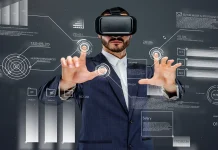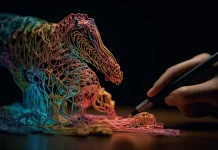Most of us have videos of weddings, birthdays, and a plethora of other important personal events. But up until the last couple of years, we’ve had to capture them on analog tape (VHS, Beta, and so forth) that not only degrades with each playback, but with the passing of time, as well. Want to avoid the “every copy looks a little worse than the original” curse? There’s only one solution: go digital!
We highly recommend spending the extra money on DVD-recordable to avoid resolution and compatibility problems. DVD-R/+R can be played in nearly every drive and player sold in the last couple of years, and its superior 720×480 maximum resolution can cope with even the highest-resolution home-video formats. Sure it’s more expensive, but these are precious memories, right?
As with everything in the world, you could either do it yourself or have it done for you at any one of the hundreds of shops selling software or photo studio. Open up any newspaper and advertisements will pop up offering to burn VCD/ DVD at Rp 75,000/- from your VHS/Betamax videos.
If you are a digital guy, read on
Capture it
Once you’ve decided on a digital storage format i.e CD or DVD, the next step is getting the video onto your computer’s hard drive, or capturing it. Capturing video requires one of these three choices:
An external USB capture box, such as Adaptec’s VideOh, ADS’s USB Instant DVD 2.0, or Pinnacle Systems’ Studio MovieBox USB
A video capture card, such as ATI’s TV Wonder Pro or Pinnacle Systems’ PCTV Pro
A combination graphics card/video capture card, such as eVGA.com’s e-GeForce FX 5600 Ultra, an Nvidia Personal Cinema card, or ATI’s All-In-Wonder series
Prices vary from less than $50 to much more than $400, and many products feature TV tuners that let you view and record your favorite shows, so consider carefully before buying.
One feature that’s absolutely essential to getting the best results is an S-Video input. Transferring via S-Video connectors almost always gives you better results than recording via the composite-video (yellow RCA) and stereo-audio (white and red RCA) jacks. If you don’t already own a VCR with an S-Video output, get one.
Also, take a hard look at your computer’s available disk space. VCD requires about 700MB of disk space per hour of video, SVCD about twice that, and best-quality DVD about 5GB per hour. About 10GB is enough headroom for the CD formats, but 20GB will be more comfortable for DVD. However, it’s a long-accepted fact of video editing that you can never have enough disk space, enough memory, or a fast-enough computer. Upgrade till it hurts.
Edit and burn
Once you’ve captured video to your hard drive, you’ll probably want to edit it–that is, trim off unwanted static from the beginning or the end, add titles or music, and so forth. If you have multiple videos on the same disc, you may want to create a menu page (best with DVDs). Then, of course, you’ll have to burn it all to disc. All of this requires software, which probably came with your burner.
If you have no software or you’re looking to upgrade to a more competent package, there are a number of titles available for less than $100: Adaptec’s MyDVD; Mediostream’s NeoDVD; Powerquest’s PowerProducer 2.0; Roxio’s Videowave (Movie Creator or Power Edition); Ulead’s DVD Workshop; and more. Ahead Software’s Nero 6.0 Ultra Edition and Roxio’s Easy CD Creator CD/DVD software suites both include competent movie-authoring programs as well.
Burn it
Burning a disc is generally no more complicated than placing it in your burner and selecting Burn or Create in your authoring program. However, there are tricks that may save you a lot of time in the long run. The first is to do test burns with re-writable discs while you’re getting up to speed with your new equipment or when you’re trying out a technique that’s new to you, such as splitting a movie across two or more discs. It’s cheaper than ruining bunches of write-once discs.
Another trick is to save your creation to the hard drive as a structure–that is, encoded and formatted with a movie disc’s strict folder- and file-naming conventions. Because the encoding happens during the initial save process, you save time when burning multiple copies, and you can even edit it later with many authoring apps (use the VR, a.k.a. Video Recording, format for maximum compatibility).





